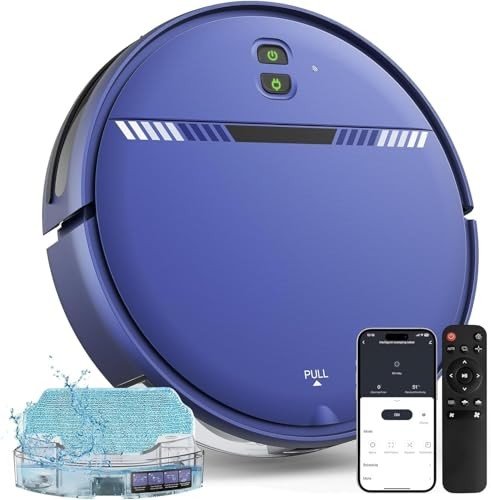20 Myths About Automatic Hoover Robot: Dispelled
The Rise of Automatic Hoover Robots: Revolutionizing Home Cleaning
In today's fast-paced world, technology continues to reshape the method we live and work. Among the developments making a considerable effect on homes are automatic hoover robots, often described merely as robot vacuums. These intelligent cleaning devices promise not only benefit but likewise effectiveness in preserving clean living spaces. This article checks out the evolution, advantages, constraints, and future of automatic hoover robots.
The Evolution of Automatic Hoover Robots
The concept of automated cleaning devices dates back to the early 20th century, but it wasn't till the introduction of sophisticated robotics, sensing units, and artificial intelligence that robot vacuums ended up being practical. The following table shows crucial turning points in the advancement of automatic hoover robots:
Year
Milestone
1996
The very first automatic vacuum is presented by Electrolux.
2002
iRobot releases the Roomba, a consumer-grade robot vacuum.
2010
Introduction of innovative mapping innovation and crash sensors.
2016
Robotic vacuums start incorporating with smart home systems.
2020
Increased adoption of AI and device knowing for better cleaning algorithms.
How Automatic Hoover Robots Work
Automatic hoover robots run using a combination of sensing units and algorithms to browse family areas. Below are essential components that contribute to the performance of these makers:
- Sensors: Lidar (light detection and varying), infrared, and cliff sensing units assist the robot map the location and avoid obstacles.
- Mapping Technology: Many designs now provide sophisticated mapping abilities, allowing efficient navigation through spaces, identifying high-traffic areas, and remembering the layout of your home.
- Cleaning Modes: Most robot vacuums include multiple cleaning modes, including spot cleaning, edge cleaning, and organized navigation.
- App Connectivity: Many modern styles enable control by means of smart device apps, enabling users to schedule cleanings and customize settings remotely.
Benefits of Automatic Hoover Robots
Automatic hoover robots offer a myriad of advantages, making them interesting a substantial number of customers. Here are some compelling benefits:
- Time-Saving: Users can arrange cleanings and multitask while the robot does the work.
- Consistent Cleaning: Regularly scheduled cleanings guarantee that homes stay neat.
- Availability: Robots can clean hard-to-reach locations like under furniture without manual effort.
- Smart Features: Integration with smart home systems permits voice control and more sophisticated scheduling options.
Limitations of Automatic Hoover Robots
Despite their advantages, automatic hoover robots have particular downsides that users need to think about:
- Battery Life: Most robot vacuums need recharging, which can interfere with cleaning cycles.
- Suction Power: While reliable for light particles, they might battle with deeply embedded dirt or thick carpets.
- Upkeep: Regular cleaning of brushes and filters is required to keep performance.
- Expense: High-end designs can be expensive, which might be a barrier for some customers.
Future of Automatic Hoover Robots
As technology continues to advance, there are a number of amazing potential customers for automatic hoover robots. Here's what to expect in the coming years:
- Enhanced AI: Improved maker discovering algorithms might permit robots to adjust their cleaning techniques based on the particular layout and dirt levels in a home.
- Multi-Functionality: Future designs might not just vacuum but likewise mop, decontaminate surface areas, or even provide real-time ecological tracking.
- Integration with Home Automation: Increased interoperability with different smart home systems will likely boost control and functionality.
- Sustainability: Future variations might focus on environment-friendly features, consisting of eco-friendly components and energy-efficient operations.
Often Asked Questions (FAQs)
1. How typically should I run my automatic hoover robot?
- It largely depends on your way of life, but running it a couple of times per week can assist keep a tidy home, particularly in high-traffic areas.
2. Can I use a robot vacuum on carpets?
- Lots of robot vacuums are created to work on carpets, however performance may differ depending upon the density and density. Constantly examine the producer's requirements.
3. Do robot floor vacuum robot with family pet hair?
- A lot of contemporary designs are equipped with brushes and strong suction power specifically developed to manage family pet hair efficiently.
4. Can I schedule cleanings remotely?
- Yes, numerous robot vacuums feature mobile phone apps that permit users to arrange cleansings and control features from anywhere.
5. How do I maintain my robot vacuum?
- Regularly tidy the brushes, empty the dustbin, and change filters according to the maker's recommendations to ensure optimum performance.
Automatic hoover robots represent a significant shift in the method homes approach cleaning. By combining sophisticated technology with user-friendly functions, these devices not only provide benefit however also enhance performance in preserving clean living areas. As advancements continue, the future of automatic hoover robots looks promising, possibly providing a lot more intelligent services for contemporary homes.
In a world where time is of the essence, the role of technology in home care is becoming progressively crucial, making automatic hoover robots an exceptional financial investment for those aiming to simplify their lives while ensuring cleanliness.
